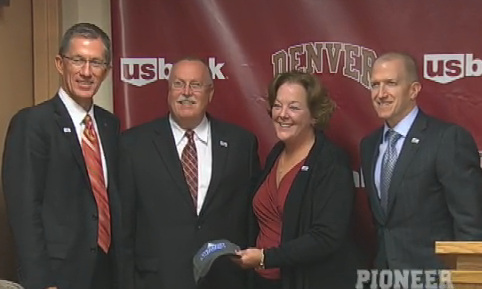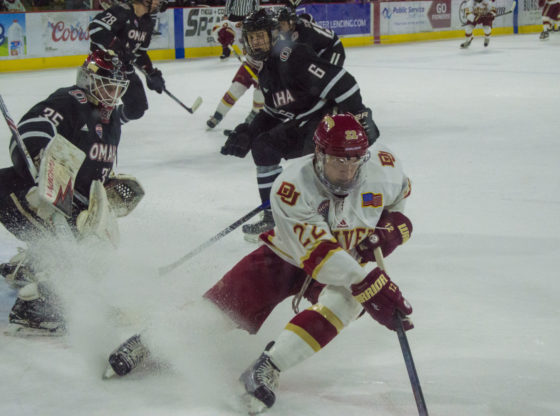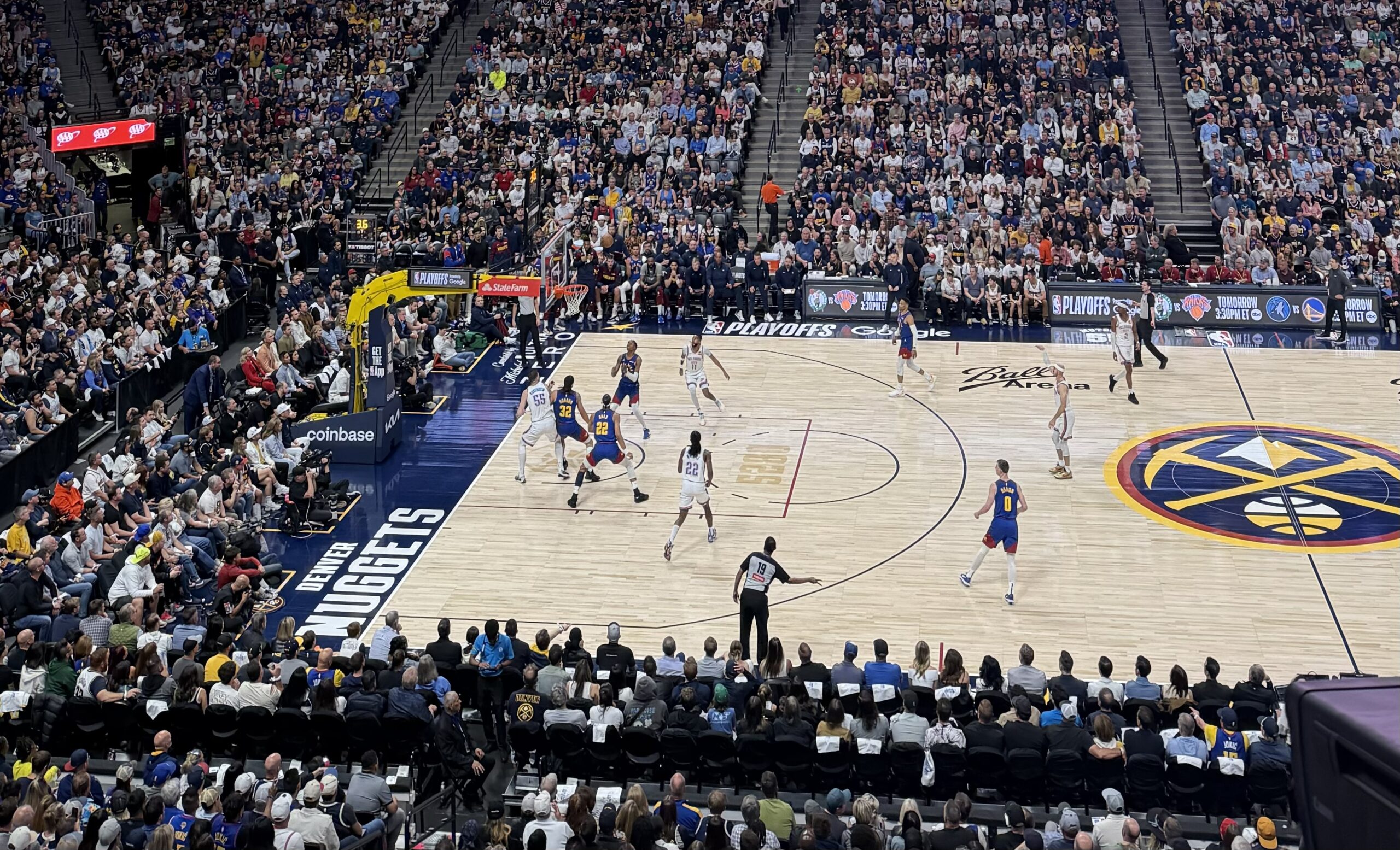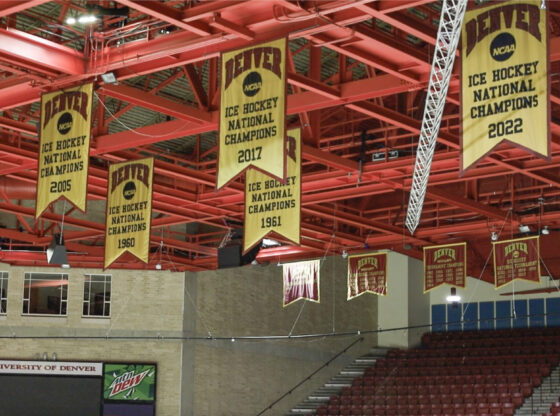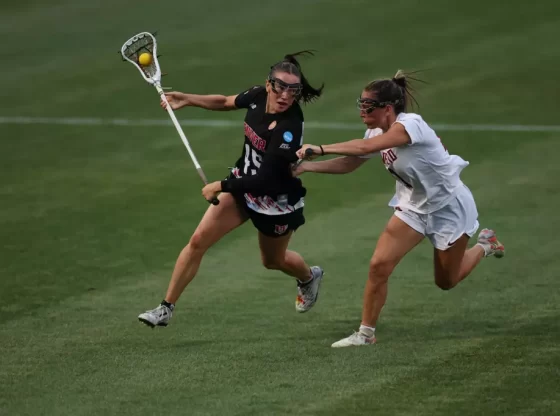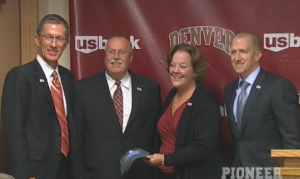
After their inaugural season as members of the Western Athletic Conference (WAC), a number of DU athletics programs are headed to their third conference in as many years as the Pioneers prepare to join the Summit League on July 1.
The university formally announced on Nov. 27 that 11 DU athletics programs will join the Summit League for the 2013-2014 season, including men’s and women’s basketball, men’s and women’s golf, men’s and women’s soccer, men’s and women’s swimming and diving, men’s and women’s tennis and volleyball. Hockey, men’s and women’s lacrosse, gymnastics and men’s and women’s skiing will not be affiliated with the Summit League and will remain in their respective conferences.
“Just as a university is responsible for providing its student athletes with solid instruction and guidance both in the classroom and on the field of play, a robust conference values educational excellence as well as athletic achievement,” said DU Chancellor Robert Coombe. “Considering its strong academic focus along with the competitive success of its member institutions’ sports programs, we could not be more pleased than to find a permanent home in the Summit League.”
The Summit League is a nine-team conference based out of Elmhurst, Ill. Current members include Indiana University-Purdue University Indianapolis, Indiana University-Purdue University Fort Wayne, University of Missouri-Kansas City, North Dakota State University, Oakland University, University of Nebraska-Omaha, University of South Dakota, South Dakota State University and Western Illinois University.
“The academic profile of this university is second to none,” said Summit League Commissioner Tom Douple in November. “We took a long hard look at a number of institutions, and the University of Denver is the right institution. The university is a tremendous addition with an excellent academic reputation and a history of very successful athletics. Denver is a renowned metropolitan area and easily accessed through one of the world’s leading airports. All of those qualities make the University of Denver an excellent fit for the Summit League.”
Turbulent waters in the NCAA
Having joined the WAC in the fall of 2012 after more than a decade in the Sun Belt Conference (SBC), the Pioneers were forced to again search for alternate conference affiliation when six of the current 10 members of the WAC announced their departure after this season.
In July, San Jose State and Utah State will join the Mountain West Conference, while Louisiana Tech and Texas-San Antonio are headed to Conference USA. Texas State and UT Arlington will also join the SBC in July of 2013. The following summer, Idaho is vacating the WAC for the Big Sky Conference.
“It has been an incredible, frantic, hectic, confusing time for all of us that are in intercollegiate athletics, not just here at DU,” said Peg Bradley-Doppes, DU’s vice chancellor for athletics and recreation. “I think you could be having this conversation with any athletic director. As long as you’re at the Division I level, the difference in our lives from 24 months ago to now and what will continue is crazy.”
According to Bradley-Doppes, one of the primary reasons DU left the SBC for the WAC in 2012 was the extreme geographic spread of teams in the Sun Belt, requiring large amounts of travel time and significant traveling expenditures for conference competition, in addition to the conference’s increasing focus on football.
“We looked to leave the Sun Belt because of the geographic and academic differences and also because it had become a football-centric conference,” said Bradley-Doppes. “They became a football conference, that was their focus, and we don’t have football. It made it really necessary that we look for a new home.”
Bradley-Doppes said that, in the WAC, the Pioneers found a home that made sense both geographically and academically, especially with the conference headquartered here in Denver. However, after six teams announced their departures primarily based on football-related decisions, Bradley-Doppes said the university found itself in a similar situation as in the SBC.
“We tried very hard to secure the membership of the WAC so that we could stay, but it became more obvious that the football piece would dictate every conversation,” said Bradley-Doppes. “As the WAC was looking at trying to solidify new members, the geographic footprint became much broader. It made the argument we made going into the WAC no longer valid. We then looked at other options.”
As of now, five new members will join the WAC on July 1, including Grand Canyon University, currently a Division II university, California State University-Bakersfield and three members of the Great West Conference: Utah Valley University, University of Texas-Pan American and Chicago State University.
Path to the Summit
According to Bradley-Doppes, the need to consider new conference affiliation arose shortly after joining the WAC, and the university then engaged in a lengthy compare-and-contrast process to identify possible homes for the Pioneers. After considering various aspects, including travel time and expenditures, membership dues, exposure and sports offered, the university decided on the Summit League.
“The Summit wanted us, wanted our academic institution, wanted our profile of sports and provided an opportunity for all 11 sports to compete in the Summit with an AQ [automatic bid to the NCAA Tournament] in every sport,” said Bradley-Doppes. “Our focus is to provide a great academic experience to our students, to reduce missed class time as much as we can and to provide a great athletic experience, and the Summit provided that. It also provided stability.”
As a member of the Summit League, Pioneer student athletes will have to travel no farther than Michigan for conference competition, and most conference members will be accessible with direct flights out of DIA, greatly reducing both travel time and costs.
According to Bradley-Doppes, the conference shift will be extremely cost-efficient to the university. While conference realignment typically requires significant changes in terms of signage and logos, the Pioneers will be able to avoid these costs.
“We were really prudent and frugal,” said Bradley-Doppes. “I didn’t paint the courts [with the WAC logo]. You will see a WAC decal we put down, but we were redoing Hamilton and Magness and Gates, and it wasn’t prudent to paint the floor. For our men’s and women’s basketball and soccer, they had to wear a WAC patch on their uniforms, but they were sewn in instead of embroidered in. Knowing how absolutely crazy the process was, we were very careful on expenditures.”
As the turbulent waters of the past year begin to calm for DU athletics, Bradley-Doppes is optimistic about the future of the Pioneers.
“I see our teams thriving and having great success,” said Bradley-Doppes. “I think it’s exciting that our student athletes, our coaches and our fans will be able to establish new rivalries. I think you will see an uptick in both competitiveness and recruiting to this great university. We will have a very successful program and be back in the hunt to recapture the Director’s Cup.”

